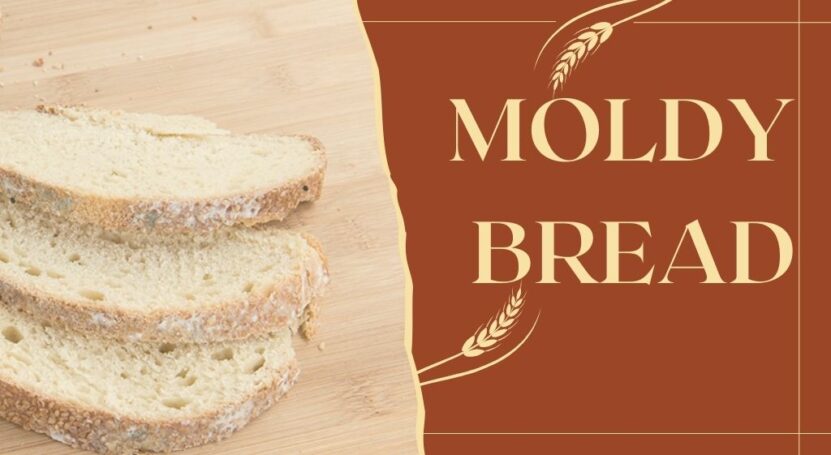Mold in bread? It’s more common than you might think, and it’s something we all need to be aware of. You see, mold isn’t just an unsightly spot on our favorite sandwich bread; it can pose real risks to our health.
In this article, I’ll guide you through what it is, why it’s important to understand the risks of consuming moldy food, and how to avoid it.
Pro Tip: Always check the expiration date on bread and store it properly to minimize the risk of mold growth.
Common types found in bread
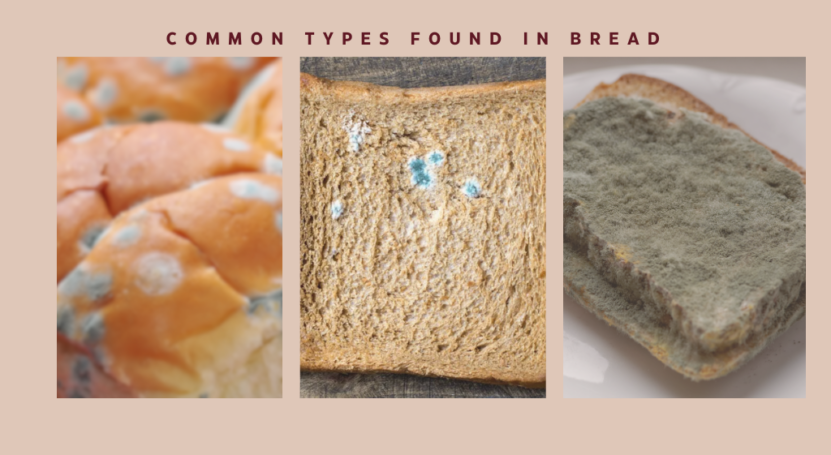
- Rhizopus stolonifer: Often seen as black spots on bread.
- Penicillium: This blue-green mold is common in many foods.
- Aspergillus: A yellow or green mold that can be harmful if consumed.
How does it develop in bread?
Mold spores are everywhere, and they can easily land on bread. Factors like humidity, warmth, and poor storage can create the perfect environment for mold to grow. If we’re not careful, a loaf of bread can become moldy in just a few days.
Factors contributing to growth
- Humidity: Mold loves moisture, so storing bread in a damp place can lead to growth.
- Temperature: Warm temperatures can accelerate mold growth.
- Storage: Poor storage, like leaving bread out uncovered, can invite mold.
Risks of Consuming Moldy Bread
Eating it is not just about a bad taste; it can be harmful to our health. Let’s explore why.
Toxic compounds produced by mold
Some molds produce toxic compounds called mycotoxins. These can cause various health problems if ingested, especially in large quantities.
Allergic reactions and sensitivities
For some people, even a small amount of mold can trigger allergic reactions. Symptoms might include sneezing, itching, or even more severe reactions.
Vulnerable groups at higher risk
Children, the elderly, and those with weakened immune systems are at a higher risk of experiencing negative effects from consuming moldy bread. It’s not something to take lightly.
Immediate Reactions
Eating moldy bread might not be something I’d ever recommend, but if it happens, here’s what you might expect.
Common symptoms
| Symptom | Possible Cause | Treatment |
| Nausea | Ingesting mold | Rest, hydration |
| Cramping | Irritation | Medication |
| Indigestion | Inflammation | Dietary changes |
Severity of reactions
The severity of reactions can vary greatly. For some, it might just be a mild stomach upset, while others might experience more severe symptoms. It all depends on the type and the individual’s sensitivity.
Fun Fact: Not all molds are harmful; some are even used in making foods like blue cheese. But it’s best to avoid the molds on bread, as they can be toxic.
When to seek medical attention
If symptoms persist or become severe, it’s time to see a healthcare provider. It’s always better to be safe, especially when it comes to something as unpredictable as mold.
Digestive System Response
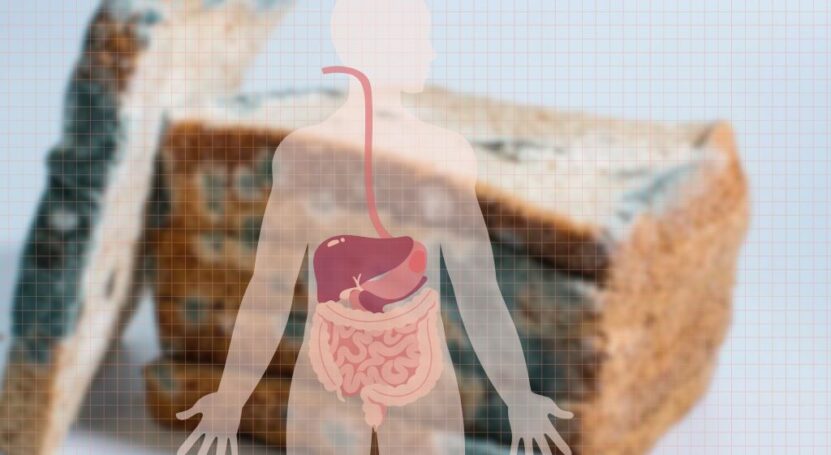
How does our body react to ingested mold?
When it enters the digestive system, it can cause irritation and inflammation. The body’s natural response might include symptoms like cramping and indigestion.
Long-term exposure can lead to chronic gastrointestinal problems. It’s not just a one-time thing; it can have lasting effects on our digestive health.
Delayed Health Complications
Mold is sneaky; it doesn’t always show its effects immediately.
Long-term effects of exposure
Chronic exposure, even in small quantities, can lead to long-term health issues. These might include respiratory problems, immune system weakening, and even potential risks to organs and systems.
Potential risks to organs and systems
Mold’s toxic compounds can affect various organs, including the liver and kidneys. It’s not something to be taken lightly, and understanding these risks is crucial for our overall well-being.
Pro Tip: Regularly inspecting food items and practicing proper food storage can significantly reduce the risk of mold exposure.
Mitigating Exposure
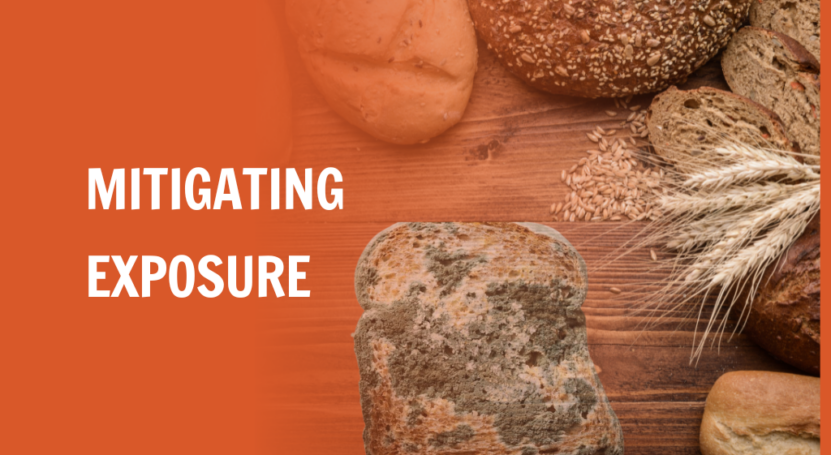
Moldy bread is something we all want to avoid. Here’s how I recommend keeping it at bay.
Identifying moldy bread
On bread, it can appear as spots of various colors, including green, black, or blue. If you see any discoloration or smell an off odor, it’s best to discard the bread.
Safe practices for handling and storing bread
- Storage: Keep bread in a cool, dry place and use airtight containers.
- Inspection: Regularly check bread for signs of mold, especially if it’s been stored for a while.
- Handling: Use clean hands and utensils to prevent the spread of mold spores.
Pro Tip: Freezing bread can extend its shelf life and prevent mold growth.
Moldy bread and cooking
Cooking or toasting moldy bread won’t make it safe to eat. The heat might kill the mold, but the toxic compounds can remain. It’s best to throw it away.
Food Safety Standards
What does the government say about moldy food consumption? Let’s find out.
Most governments advise against consuming moldy food, including bread. The presence indicates that the food is spoiled and can be harmful to health.
“Best before” dates are there for a reason. Consuming bread past this date increases the risk of mold growth. Always check the date and adhere to it.
| Action | Result | Recommendation |
| Eating past best before | Increased risk of mold | Avoid |
| Storing in a damp place | Mold growth | Use dry storage |
| Ignoring mold spots | Potential health issues | Discard the bread |
FAQ
Can I remove mold from the bread and eat the rest?
No, it can penetrate deeper into the bread, so removing the visible part doesn’t make it safe to eat.
What are the signs that bread is unsafe to eat?
Look for discoloration, off odors, or a change in texture. Trust your senses; if something seems off, it probably is.
Are some types of mold in bread safe to eat?
While some molds are used in food production, those found on bread are typically not safe. It’s best to avoid them.
Can toasting moldy bread make it safe?
No, toasting doesn’t remove the toxic compounds produced by mold.
Conclusion
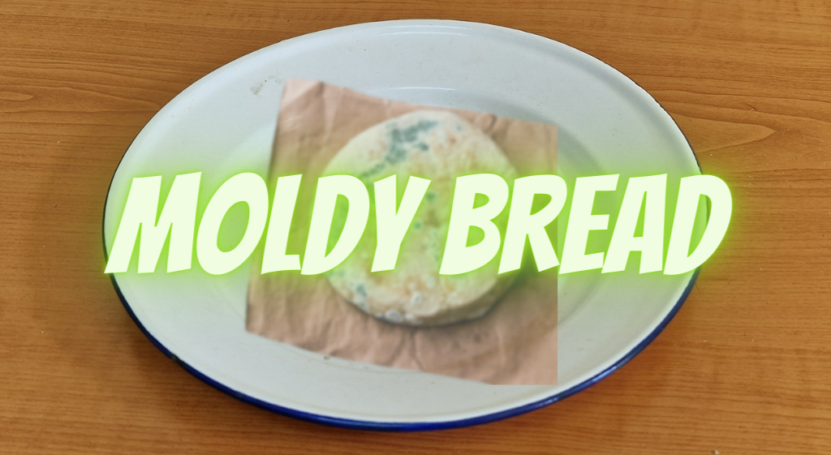
Moldy bread is more than just an unpleasant sight; it’s a health risk that we all need to be aware of. From understanding what mold is to recognizing its potential dangers, it’s essential to practice proper food handling and storage.
Remember, when it comes to mold, prevention is key. Stay safe, trust your senses, and enjoy your bread fresh and mold-free!
